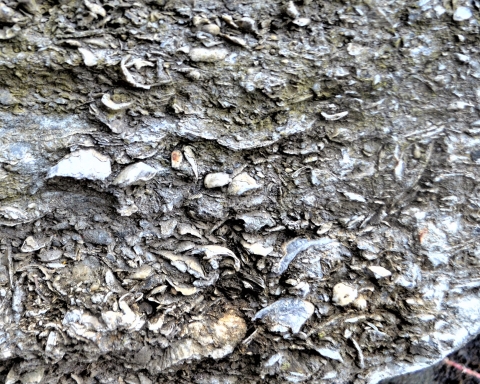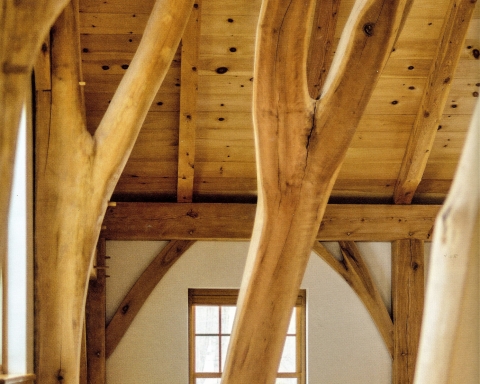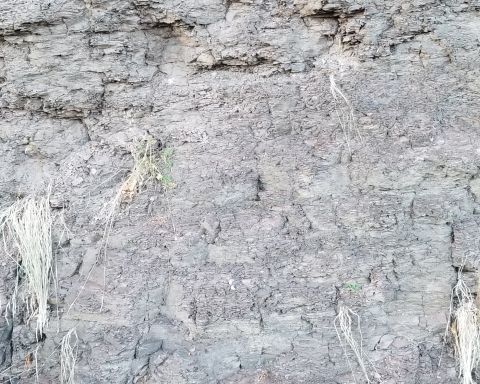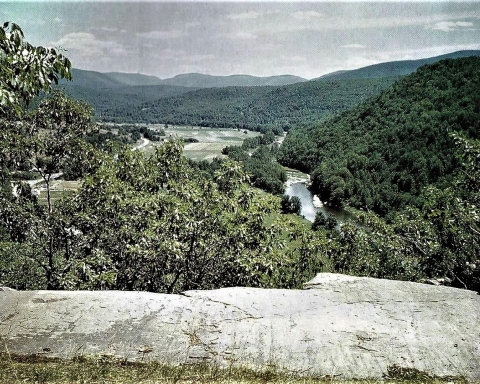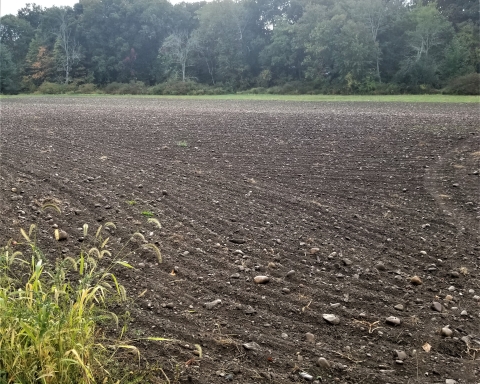Where is it all going? An essay on time.
On The Rocks; Th Woodstock Times, March 3, 2016
Updated by Robert and Johanna Titus
When you climb up to the top of Overlook Mountain, pass the hotel ruins and keep on going. Climb the old fire tower. It’s been restored so you can do just that safely. Like most people you are likely to be taken in by the beauty of what you see. You can turn a full 360 degrees and gaze off in every direction. To the north is the wall of Manitou, that straight-as-an-arrow ridge along the eastern flank of the Catskills. To the south you can see all the way to High Point Mountain in New Jersey. To the west, all of the Catskills stretch out before you. And lastly, to the east is the grand expanse of the Hudson Valley. It is such an experience to do all this. Autumn is perhaps the most beautiful time of the year to do so, but all four seasons are rich and generous in their stunning images. Overlook Mountain is one of Woodstock’s emblems. It is truly part of your town’s heritage. But, here’s a question that probably has not crossed your minds. Where is all that stuff going to go?
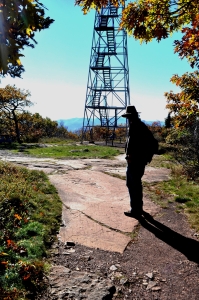
What? You might think the two of us are mad to ask such a question; after all Overlook mountain is firmly planted exactly where it is. Overlook Mountain is not going to get up and go anywhere. Well, we know it won’t get up . . . but . . . it is going to go away. The question is when and to where. We have some explaining to do.
The two of us live inside a tiny dot within the great expanse of a temporal infinity, but we can focus on the vast amounts of time, stretching out behind us and ahead of us. We look into the far distant future and we know what all that time will witness: the demise of Overlook – and everything else that we can see from that fire tower. And, we can look around and see how. We can actually perceive it happening
We look straight down from that tower and see the ground below. We know that, right in front of us, soil forming processes are turning the bedrock of Overlook into the thin soils of that mountaintop. We can’t see those processes; they are chemistry and biology, and they are far too slow. But we know that they are operating – right in front of us.
And, there is more. Slowly, very slowly, those soils are sliding downhill. The sliding is faster during rainy seasons. The rain soaks into the ground. The water allows grains of sand and silt to float just a little bit; they buoy them up. Then those grains slide past each other, and that is almost always in a downhill direction. The soils almost flow as if they were fluids. But again, it is all so slow. None of it can be seen.
Geologists like to stick stakes into the slopes, and come back year after year to see if they have moved. If they are patient and come back often enough, those stakes are seen to have leaned over, and to also have moved, if ever so short a distance; again it’s always downhill. Sluggish as these processes are, they continue through endless stretches of time. And, this is geology; there is always so very much time.
Just a little faster are the processes of erosion. Down the mountain slope, well below the fire tower, groundwater reaches the surface and so is the genesis of springs at the heads of rivulets. Those flows are hardly much of anything at first, but they coalesce into currents that can be properly called streams. Then they join to become tributaries. All along they are increasingly erosive; they pick up and carry away more sediment. We humans lament the loss of what had once been rich soils. But Nature does not care; Nature just watches.
We climbed back up the fire tower and, once again, gazed in all of the directions those 360 degrees gave to us. Now we were more expectant. We became time travelers, something that geologists are so good at. Around us, the foliage of the forest changed from green to gray and then back again. The transitions continued and sped up. We were watching seasons pass. Soon time raced by so fast that the color stopped cycling and became a continuous grayish green blur.
In this accelerated and accelerating version of reality, we watched and began to see the tops of mountains rounding off and then lowering. Steep slopes became far more gentle. The peaks began to dissolve into an ever more rapidly advancing time.
What was happening right before us? The bedrock had been turning into soil and the soils were sliding downhill. Having gone far enough they were swept up in the flows of streams. Those were small at first but, farther downhill, they became tributaries of larger and more erosive flows. Bedrock had turned into sediment and that sediment was being carried off. Landscape was withering away.
We remained on top of that fire tower and the fire tower remained on top of Overlook. But the elevation of that mountaintop was fast declining and the land, all around us, was disappearing. Much of the newly created sediment was carried directly into the Hudson River. To the north the effort was more circuitous. There sediment entered into the Schoharie Creek, traveled to the Mohawk River, and from there it arrived at the Hudson. To the west sediment traveled into the Susquehanna and the Delaware Rivers. In every direction the sediment was flowing away from Overlook.
We watched as, everywhere, rock was turned into sediment and that sediment was carried down the rivers. And, all around us, the landscape disappeared. Where did it go? Into the coastal waters of the Atlantic Ocean. Down there the sand of broad white beaches had once belonged to our mountains.
Geologists have understood the vastness of time for several centuries now. It makes us feel small, but it gives us a large understanding of the world all around us. And we also understand landscape’s place in that vastness of time. We mortals are, indeed, small and ephemeral, but so too are mountains. Nothing, absolutely nothing, lasts forever.
Contact the authors at randjtitus@prodigy.net. Join their facebook page “The Catskill Geologist.”

